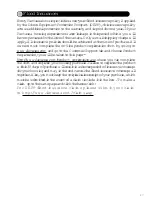
14
Focusing and Shutter release control.
There are three light meters in the D-50; Matrix, Center Weighted, and
Spot. Read the D-50 instruction manual for complete descriptions on
each of these meters and when to use each. No matter which one you
choose, they all help guide you to the proper shutter speed and aperture
combination for proper ambient light exposure. Where you aim the meter
is also important. In underwater photography, it is important to remember
to aim the meter at the background water or "sky" to get the proper
exposure information. It is often necessary to gather this information,
make your exposure settings, and then re-compose the scene before
shooting.
Using the camera's light meter to determine ambient light
It is highly recommended that a D4 be used with the standard kit
lens and Macro lenses to help with the focusing and triggering of the
housing.
Get used to operating this control on the camera in both half depress,
and full depress movements. You will frequently depress the shutter
release only half way to activate the exposure meter and auto focus to
preview the shooting conditions and make setting changes. Once you get
the feel for operating the camera control directly, you can then try it in
the FD-50N, using the housing's trigger control in the same manner.
Use the viewfinder eyepiece.
Compose and view exposure information display. It is very important
that you become familiar with the information display in the viewfinder
so you can make proper exposure settings and know what other settings
have been made. You will use this often and it is good to become familiar
with it before attempting to read it underwater. Also practice composing
and focusing the camera by eye, before using it underwater to get the
feel for this operation as well.
Changing Exposure Settings
Using the camera in its Manual (M) Exposure Mode gives you the
ability to change either shutter speeds or apertures to control the
exposure the way you want. Get used to making these changes while
your eye is in the viewfinder and you are referencing the LCD display
for guiding you in the exposure process. The command dial is set to
change shutter speeds, and the sub-command dial is set to change
apertures. Practice operating each of these controls so they become
instinctive in operation.
Utilizing each housing control to properly and efficiently change camera
settings. Some controls only require a straight pushing movement, while
others may require pushing and rotating simultaneously to operate.
Familiarize yourself with the movements required




































